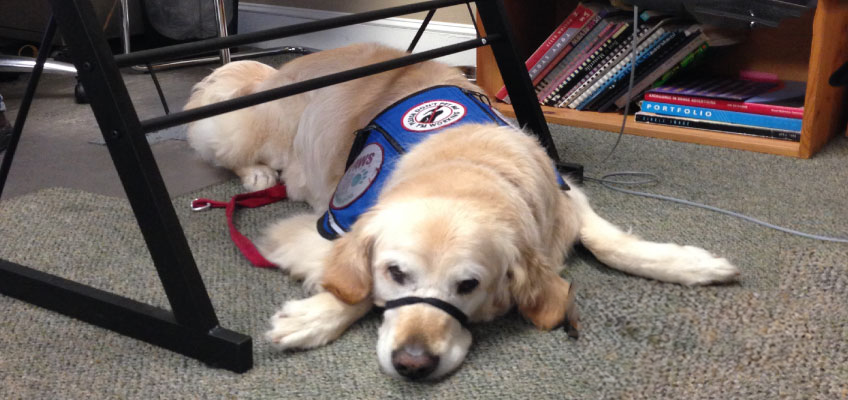Ensuring a workplace is welcoming to employees with service dogs starts with clear policies and training for all staff. According to the U.S. Department of Labor under Title I of the Americans with Disabilities Act (ADA), a reasonable accommodation is a modification or adjustment which includes modifying a policy to allow a service animal in a business setting. Businesses should identify designated relief areas outside and maintain clear pathways inside to support mobility. Written guidelines can clarify expectations, such as how colleagues should interact with service animals and how to address any concerns. It is important, especially in a work setting, that co-workers do not pet or play with the service dog, unless the handler gives them permission to do so.
Supervisors should also be prepared to discuss accommodations on a case-by-case basis to meet individual needs. Special accommodations might include bathroom breaks for the dog, a water dish, or something along those lines. By fostering an inclusive environment, businesses demonstrate their commitment to accessibility and employee well-being.
Reasonable accommodations help employees with disabilities perform their jobs effectively. Businesses should create a structured process for employees to request accommodations, ensuring that needs are met without delay. Offering flexible work arrangements, can also improve accessibility. Employers should maintain an open dialogue with employees to adjust accommodations as necessary. Implementing these strategies helps create a workplace where all employees can contribute to their fullest potential.
Reasonable accommodations should not be viewed as “special treatment” and they often benefit all employees. For example, facility enhancements such as ramps, accessible restrooms, and ergonomic workstations benefit more than just employees with disabilities. Examples of reasonable accommodations include making
- Physical changes
- Installing a ramp or modifying a rest room
- Modifying the layout of a workspace
- Accessible and assistive technologies
- Ensuring computer software is accessible
- Providing screen reader software
- Using videophones to facilitate communications with colleagues who are deaf
- Accessible communications
- Providing sign language interpreters or closed captioning at meetings and events
- Making materials available in Braille or large print
- Policy enhancements
- Modifying a policy to allow a service animal in a business setting
- Adjusting work schedules so employees with chronic medical conditions can go to medical appointments and complete their work at alternate times or locations
Written by: Brendan Madden and Shelley Bowling

